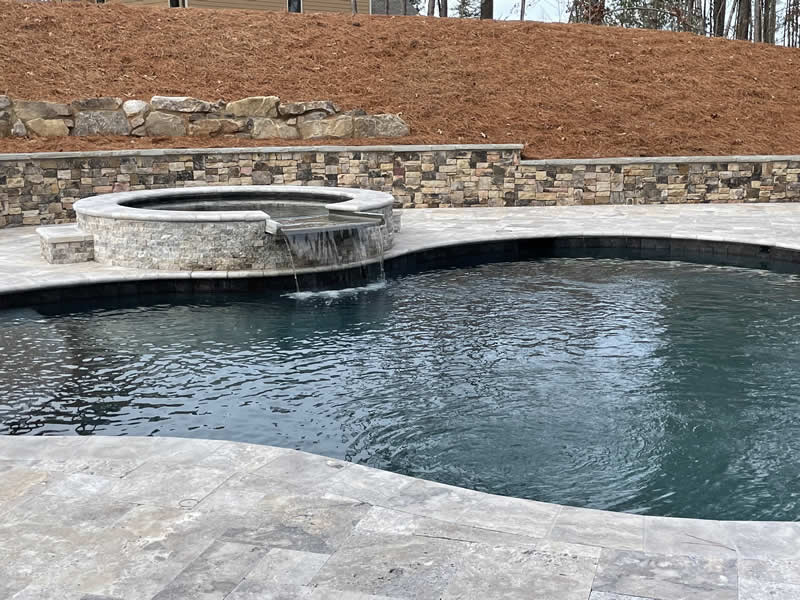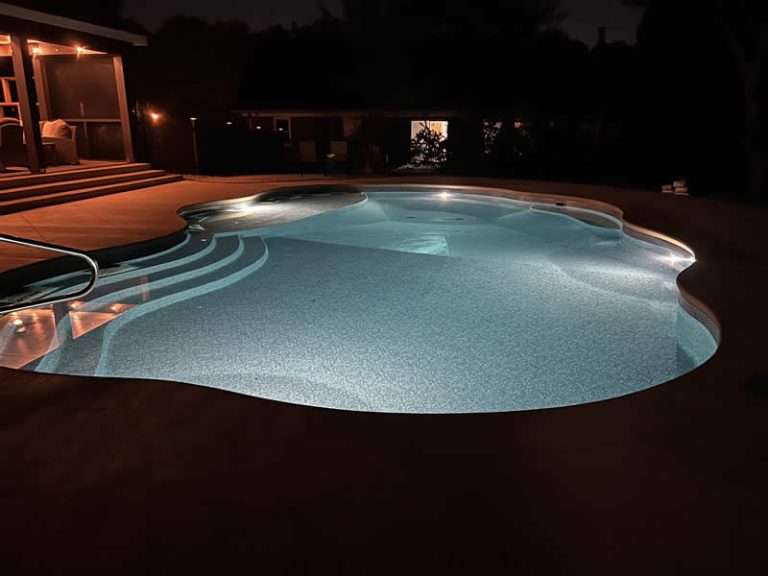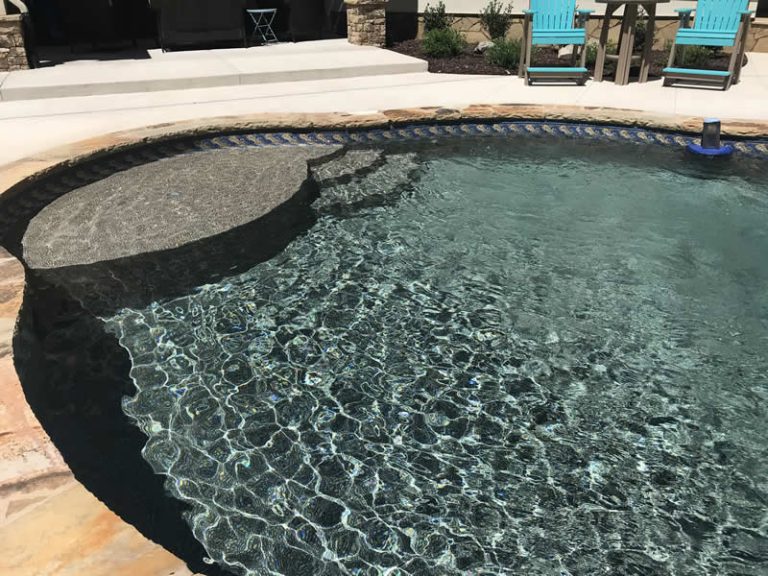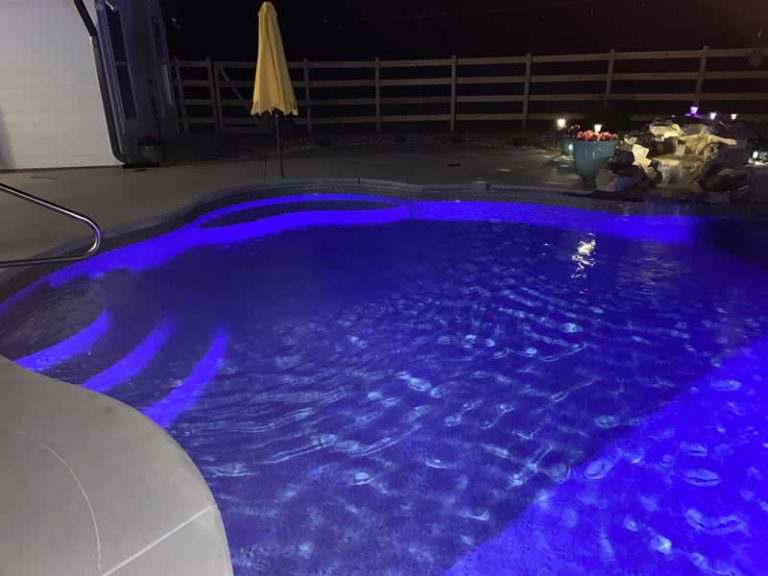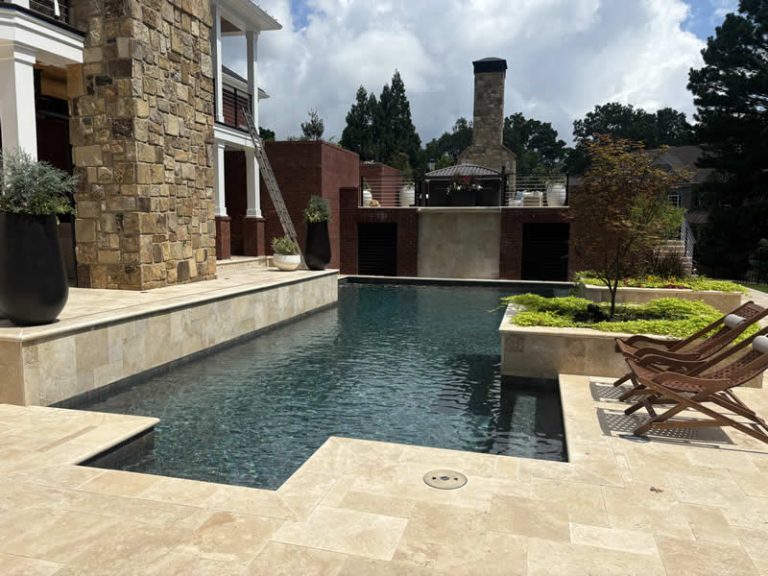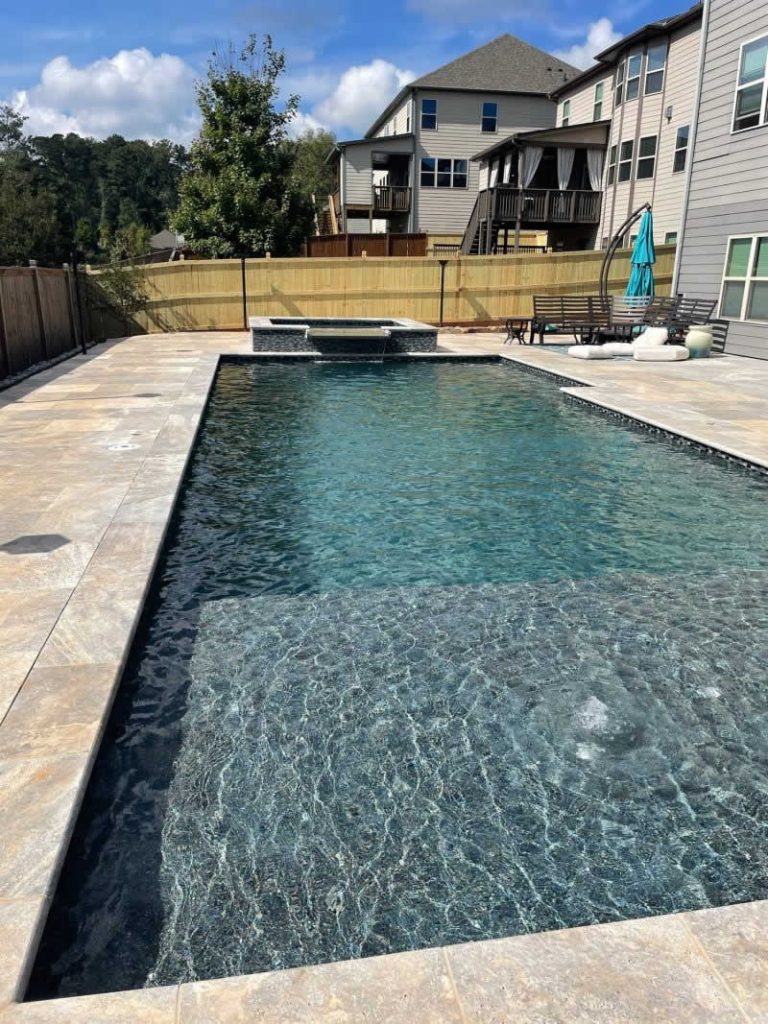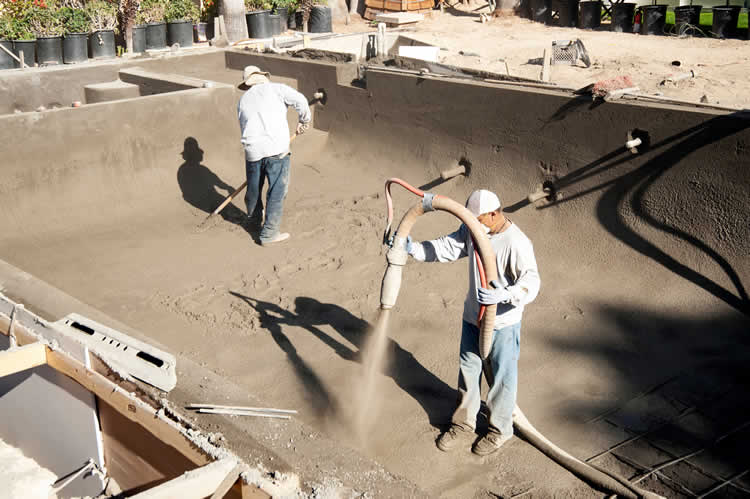How to Pick the Perfect Pool Finish and Color
One of the most exciting parts of building a pool — and honestly, one of the most overlooked — is choosing the finish and color. Most homeowners think of the finish as purely aesthetic, something that makes the pool look pretty. But it does more than that. The finish determines how smooth the surface feels, how bright the water appears, and even how much time you’ll spend maintaining it.
You could have two identical pools — same shape, same size — and they’ll look completely different based solely on the finish. That’s why it pays to understand what’s beneath the surface before you pick a color swatch.
The Main Types of Pool Finishes
Let’s start with the basics. In Georgia, the three most common finish types are plaster, pebble, and quartz. Each has its own look, texture, and longevity.
Plaster is the classic option — a mixture of cement, sand, and water that’s troweled by hand over the pool shell. It gives you a smooth, bright surface and that traditional light-blue look you probably picture when someone says “swimming pool.” It’s affordable and versatile, though it does require more upkeep over time. You’ll typically see some etching or fading after a decade or so, but resurfacing brings it right back.
Pebble finishes are a premium upgrade, blending small, polished stones into the mix. They give the pool a natural, textured appearance and a surface that’s incredibly durable. Pebble finishes come in a wide range of tones — from beachy tan to deep charcoal — and they’re popular for homeowners who want that lagoon or lake look. They also hide minor stains and imperfections better than plaster, which means less worry about chemical imbalances or leaf stains.
Then there’s quartz, which is kind of the middle ground. It’s made by adding crushed quartz into the plaster, which boosts durability and creates a subtle sparkle when sunlight hits the water. It’s smoother than pebble, tougher than plain plaster, and perfect if you want a little shimmer without going full luxury finish.
For the truly custom builds, there are tile and glass bead finishes — absolutely beautiful, but they come with higher cost and labor. Those are typically reserved for high-end gunite installations or accent areas like steps and spas.
How Finish Affects Feel and Maintenance
The texture of your pool finish directly affects how the water feels and how much cleaning you’ll do. Plaster is smooth and soft, which feels great underfoot, but it’s also more porous. That means it can develop minor surface stains if the water chemistry isn’t balanced regularly.
Pebble finishes feel a little rougher to the touch, but that texture actually helps disguise wear. They’re incredibly forgiving. Most pebble finishes last 15 to 20 years, compared to 10 to 12 for standard plaster. Quartz sits right in the middle — smooth enough for comfort, hard enough to resist staining.
When it comes to upkeep, the smoother the surface, the more you’ll want to stay on top of brushing and pH balance. The textured finishes hide more, but they still benefit from consistent water care. The difference is that with a pebble or quartz finish, you don’t feel the pressure to keep it pristine every single day. It’s just a little more relaxed.
How Color Changes Everything
Now, about color. It’s one of those decisions that looks simple until you see how different it looks in real light. The shade of the finish controls how the water reflects — and that reflection sets the mood of your whole backyard.
Light colors like white, sky blue, or pale aqua give that traditional “bright and sparkling” pool look. They make the water look clean and inviting, and they reflect heat, which keeps the temperature a little cooler in the Georgia sun.
Medium tones — think sapphire, teal, or lagoon blue — deepen the water’s appearance and make the pool feel richer, especially with darker stone or tile surroundings. These colors also hide small imperfections better than lighter finishes.
Dark finishes like charcoal, navy, or even black create a dramatic, mirror-like effect. They blend beautifully with natural stone, modern homes, and wooded backdrops. Dark finishes absorb heat faster, warming the water slightly earlier in spring and keeping it warmer later into fall. The trade-off is that calcium buildup and lighter debris are a bit more visible, so regular brushing helps keep it sharp.
It’s worth noting that water color doesn’t exactly match the finish color. It’s a blend of depth, sunlight, and surroundings. A medium-blue plaster might look turquoise in direct sun but deep ocean blue under cloud cover. That’s normal — and honestly, part of the magic.
Coordinating With Your Home and Landscape
Choosing the right color isn’t just about personal preference. You want it to complement your home’s architecture and yard. For example, lighter finishes pair well with stucco or brick homes and open patios, while darker finishes look amazing against stone walls, wooded lots, or modern gray exteriors.
If your yard gets full sun most of the day, lighter finishes can help keep things cool and reflective. For shaded or wooded areas, darker finishes add warmth and visual depth. I often tell homeowners to think of their pool as an outdoor room — the finish is your flooring, and the water is your lighting.
Don’t forget how color interacts with decking and tile. A tan deck will reflect warm light into the water, making it appear greener. A gray deck shifts the tones toward blue. If possible, look at finish samples in natural light, ideally right where the pool will sit. A color that looks perfect indoors can read completely different outside.
How to Choose With Confidence
When in doubt, think about mood. Do you want your backyard to feel bright and crisp, like a resort cabana, or calm and earthy, like a natural pond? Your finish and color are what set that tone.
Lighter plaster and quartz finishes create a cheerful, timeless look. Pebble or darker quartz finishes lean sophisticated and grounded. If you want to play it safe, go with mid-tone blues — they’re universally flattering, easy to maintain, and forgiving in every kind of weather.
At the end of the day, picking the right finish is about striking the balance between beauty and practicality. You’ll live with it every day, so choose something that makes you pause and smile every time you walk outside. That’s the real test — not what looks best on a screen, but what feels right when you see the water moving in your own backyard.

